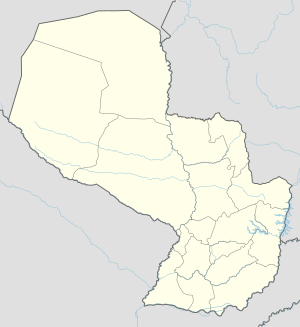Second Battle of Nanawa
| Second Battle of Nanawa | |||||||
|---|---|---|---|---|---|---|---|
| Part of the Chaco War | |||||||
 Map of the battle |
|||||||
|
|||||||
| Belligerents | |||||||
|
|
|
||||||
| Commanders and leaders | |||||||
|
|
|
||||||
| Strength | |||||||
| ~9,000 troops 4th and 9th Divisions |
~9,000 troops 5th Division |
||||||
| Casualties and losses | |||||||
| 1,600 1 tank 2 tankettes |
500 3 aircraft damaged |
||||||
|
|
|||||||
The Second Battle of Nanawa was a battle fought from July 4–9, 1933, between the Bolivian and Paraguayan armies during the Chaco War. It was one of the bloodiest battles fought in South America in the 20th century, coming to be labeled as the "South American Verdun" by comparison with the Battle of Verdun of World War I.
The battle was the last Bolivian attempt to capture the heavily fortified stronghold of Nanawa, a salient in the southern front. By capturing Nanawa the Bolivian army hoped to isolate Isla Poí, the Paraguayan headquarters to the northeast, and ultimately reach the city of Concepción, on the Paraguay River. Nanawa (Enxet for "carob tree forest") had been founded as a small outpost in 1928 by Ivan Belaieff, a white Russian officer who joined the Paraguayan army in the 1920s. In December 1932 the Bolivian army took over a number of Paraguayan outposts between Nanawa and the Pilcomayo River. Realising that a major offensive was looming, the fort's commander, Col. Luis Irrazábal, built up a horsehoe-shaped defense facing west around the old outpost and gathered under his command four regiments and several minor units that made up the Paraguayan Fifth Division. On January 20, 1933, Nanawa was the subject of a massive Bolivian assault, which stalled after several days of heavy fighting and was eventually beaten back by the Paraguayan garrison. The Bolivian army suffered 2,000 casualties. By March, Nanawa became the headquarters of the Paraguayan III Army Corps.
The battle began on July 4 at 9:00 a.m. with the explosion of a large mine just 30 yards short of the main Paraguayan redoubt, followed by a massive frontal attack. Part of the redoubt was seized by the attackers. The Bolivian army engaged the defenders with artillery and mortar fire, air strikes, three Vickers light tanks, two Carden-Lloyd tankettes and four flamethrowers. The attackers staged a two-pronged assault, one from the north and the other from the south, while a diversionary force established a blocking position in the center. The Paraguayan troops responded with their own artillery fire and 7.62mm armor-piercing rounds. They eventually recovered the fortifications that had been overrun by the Bolivians.
...
Wikipedia

